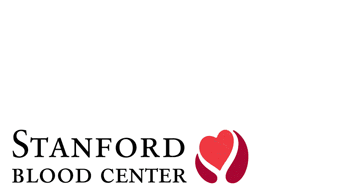Transfusion Medicine’s Portrayal on Television
By Tim Donald, Contributing Writer, American Association of Blood Banks
Roxanne and Mark decide to donate blood. While they are sitting together in an open waiting room, a nurse asks Roxanne questions about her sexual history and number of partners loud enough for all to hear. They are told their blood will be tested to see whether it is “clean” enough to be used. They spend a sitcom eternity waiting anxiously for the results to learn whether they have any sexually transmitted diseases, or STDs. In the end, someone from the clinic calls each partner to tell them that they do not have STDs. (Source: Whitney, Season 1, Episode 12, “Faking It”)
Pop quiz: What’s wrong with these scenes from the NBC situation comedy “Whitney?”
If you answered that donor interviews are normally conducted in private, you are correct. You also are correct if you answered that donors are normally notified only if they “do” have an STD, and that sometimes blood is discarded before it is tested, so donors who do not receive a call should not assume they are STD-free.
Welcome to the world of blood banking and transfusion medicine as portrayed on television. This is a world in which the truth may be embellished for comedic or dramatic effect. For example, when someone gives blood in a sitcom, he or she typically will faint from the experience. Or, if someone needs a blood transfusion, they inevitably have a rare blood type.
Understanding these distortions may help transfusion medicine professionals address donor and recipient misgivings or misinformed beliefs they encounter in the clinic. This article examines ways in which transfusion medicine is misrepresented on television.
Blood Donation Mishaps
Blood donor mishaps are frequently the basis for sitcom gags. Examples include the violation of privacy in “Whitney” mentioned above and an episode of “The Office” in which Michael passes out after donating blood (“The Office,” Season 5, Episode 18). However, the reality is different.
Regarding privacy, “Everything is confidential,” said Melanie L. Allen, marketing manager at Inova Blood Donor Services in Sterling, Va. “We do our best, based on Food and Drug Administration regulations and our own ethical standards, to keep information as private as possible. In our donor center, screening is done in private rooms. On blood drives, there are dividers between each of the screening areas,” Allen continued. “The FDA regulates that there be a certain space between areas.” In addition, Allen noted that most screening questions are no longer asked and answered aloud. While it would be conceivable to hear a conversation from the other side of a divider, it would take great effort, unless a potential donor is a very loud talker.
Information obtained in screenings is not covered by the Health Insurance Portability and Accountability Act the procurement or banking of blood is specifically exempted from HIPAA “because donors are voluntarily giving us this information,” Allen said. Nonetheless, as a general matter, “We don’t share information with anyone else,” she said.
Severe donor adverse events such as loss of consciousness for a minute or more, major allergic reaction, injury, or nerve irritation are rare, according to the 2009 National Blood Collection and Utilization Survey Report from the U.S. Department of Health and Human Services. The rate of such events per unit collected was 0.09 percent, and HHS has developed a donor hemovigilance system, called Donor HART, in collaboration with AABB and a software developer, to collect information about these types of adverse events that can be analyzed to identify potential improvements in the donor experience and to reduce the risk of reactions.
“There is always the perception, in the media and also in the public, that you feel weak after you donate blood, that we take so much blood that you don’t feel good and you’re going to pass out,” Allen said. “Of course that rarely happens.”
“Rare” Blood
AB-negative blood is the least common blood type in the ABO blood group system. To make a sweeping generalization, when TV writers decide to design a dramatic episode around the need for a blood transfusion, the preceding sentence is as far as their research goes. Oh, yes, they also may be aware that O negative is the universal blood type for red blood cell, or RBC, transfusion.
“They don’t get it totally wrong. They’ll say two units of O-negative blood, stat!’ That makes sense,” said Cynthia Flickinger MT(ASCP)SBB, director, technical services, National Reference Laboratory for Blood Group Serology, American Red Cross Biomedical Services, Penn-Jersey Region, in Philadelphia.
Sometimes, however, in the hands of TV writers, “the least common blood type in the ABO blood group system” becomes “the rarest blood type in the world!” A number of dramatic series, including “Dexter” and “Monk,” have built episodes around the rarity of the AB-negative blood type.
Reality check: The AB blood types are found in about 4 percent of the Caucasian population AB negative in about 1 percent. By contrast, the American Rare Donor Program, or ARDP which tracks and organizes rare donor information in an effort to better meet the needs of patients with rare blood types defines rare blood types as those that are present in less than 1 in 1,000 donors. For frequently transfused patients who have developed multiple antigens, matches may be even rarer, by orders of magnitude 1 in 10,000 or 1 in 100,000, said Flickinger, who also is director of the ARDP.
“Chronically transfused patients can make up to 6, 8, 10 different antibodies, and every time one is added into the mix, it lessens the number of donors we can find to provide for them,” she said.
Although the ABO blood group system is the most important system for the purposes of blood transfusion, it is only one of more than 30 blood group systems, including the Rh, MNS, Kell and Kidd systems. The A and B antigens are two among hundreds of antigens that have been identified on the surface of RBCs.
So when told that a character in “Monk” declares that his “AB negative with a D antigen” blood is “the rarest blood type in the world,” (“Monk,” Season 2, Episode 16, “Mr. Monk Goes to Jail”) Flickinger noticed the inaccuracy.
As stated earlier, AB blood types are found in about 4 percent of the Caucasian population. “Among the ABO system, this is rather high incidence, actually,” Flickinger said. “But AB individuals can receive all blood types, A and B and O, so they are not hard to find blood for. D negative is maybe 15 percent of the population. However, that AB negative patient can receive any blood that’s D negative, so that is still quite a bit, certainly greater than 1 in 1,000. They would not have to go through the ARDP.”
Ban on MSM Blood
Currently, the FDA’s policy regarding blood donation by men who have sex with men, or MSM, is that men who have had sex with other men at any time since 1977 are deferred as blood donors. This deferral policy is based on risk: According to the FDA, MSM are, as a group, at increased risk for HIV, hepatitis B and other infections that can be transmitted by transfusion.
This deferral policy was used as the basis for a story line in the TV drama “Harry’s Law” (Season 2, Episode 21, “The Whole Truth”). In the episode, a gay man is barred from donating his O-negative blood directly to his brother who has been injured in an accident. The plot turns on the efforts of the lawyers to obtain permission for this recently HIV- tested MSM to donate blood.
The episode raised a number of red flags for Susan Galel, MD, director of clinical operations at Stanford Blood Center and an associate professor at Stanford University School of Medicine in Stanford, Calif. She noted, first, that O-negative individuals could be unduly frightened by the scenario of an O-negative patient dying for lack of blood. In trauma situations, generally it is safe to use O-positive blood, and this would have been given to the patient.
Second, the show perpetuates the misperception that direct donations are instantaneously available but community donations take a long time to process, Galel said. The implication is that the directed donation would be released untested.
Third, it was not necessary for the characters to spend hours in court to obtain permission for an emergency exception. Federal law allows medically justified exceptions at the discretion of the physician and medical director. In a situation in which fully tested community blood was not available, medical directors could have released incompletely tested blood already donated by individuals who met all eligibility criteria.
Finally, Galel said, the episode downplayed the potential risk, with the characters arguing that the brother’s blood was “safe” because he was in a committed relationship; no mention was made of the partner’s HIV status.
The story “belittled blood donor eligibility policies,” she said, noting that public health services and the FDA are working to identify donor screening criteria that could allow low-risk gay men to donate.
Additionally, AABB strongly supports the use of rational, scientifically-based deferral periods that are applied fairly and consistently among blood donors who engage in similar risk activities. In 2006, it presented a joint statement with America’s Blood Centers and the American Red Cross to the FDA, Blood Products Advisory Committee recommending that the committee modify its current “life- time deferral” for men who have had sex with other men since 1977 to a “12-month deferral.” That would make it comparable with criteria for other groups at increased risk for sexual transmission of transfusion-transmitted infections.
When Blood Is Not an Option
A sensitive subject that is occasionally dealt with in TV dramas is treatment for those who do not accept blood transfusions, such as Jehovah’s Witnesses. Or, as Aryeh Shander, MD, puts it, those “for whom blood is not an option.”
He explained that this includes not only Jehovah’s Witnesses but also alloimmune patients, those concerned about bloodborne diseases, and those for whom blood may not be available at a given time or place. Shander, chief of the Department of Anaesthesiology, Critical Care Medicine, Pain Management and Hyperbaric Medicine at Engle- wood Hospital and Medical Center in Englewood, N.J., is well known for his innovations in the development of bloodless procedures to assist Witnesses and others who cannot or will not be transfused.
Jehovah’s Witnesses can accept medical and surgical treatment, but they believe that certain Bible passages forbid blood transfusion, according to Watchtower.com, the official website of Jehovah’s Witnesses. Many will allow the use of heart-lung, dialysis, or similar equipment if extracorporeal circulation is uninterrupted.
“You have to make sure that the blood is in contact with the circulation,” Shander said. “The minute you store the blood it is no longer a viable option for them.”
TV plots occasionally center on Jehovah’s Witnesses needing transfusions. Inanepisodeof “Scrubs” (Season 5, Episode 9, “My Half-Acre”), for example, a patient who is a Jehovah’s Witness needs a blood transfusion for a simple procedure, but a more complex procedure to help her without transfusion is eventually found.
There are misconceptions about the beliefs and practices of Jehovah’s Witnesses in the public as well as the medical profession, Shander acknowledged, “and those can be easily dealt with by education.”
Some have called Jehovah’s Witnesses “heretics in the cathedral of medicine,” Shander said, because they do not accept blood. In fact, they have actually taught us an enormous amount in learning how to treat them.”
While TV writers may not be “heretics in the cathedrals of medicine,” they are at times guilty of stretching, misinterpreting or misrepresenting reality for the sake of a laugh or a tear. Being aware of these distortions can help clinicians and others in the field of transfusion medicine bring donors and patients from the world of TV fiction back to reality.

